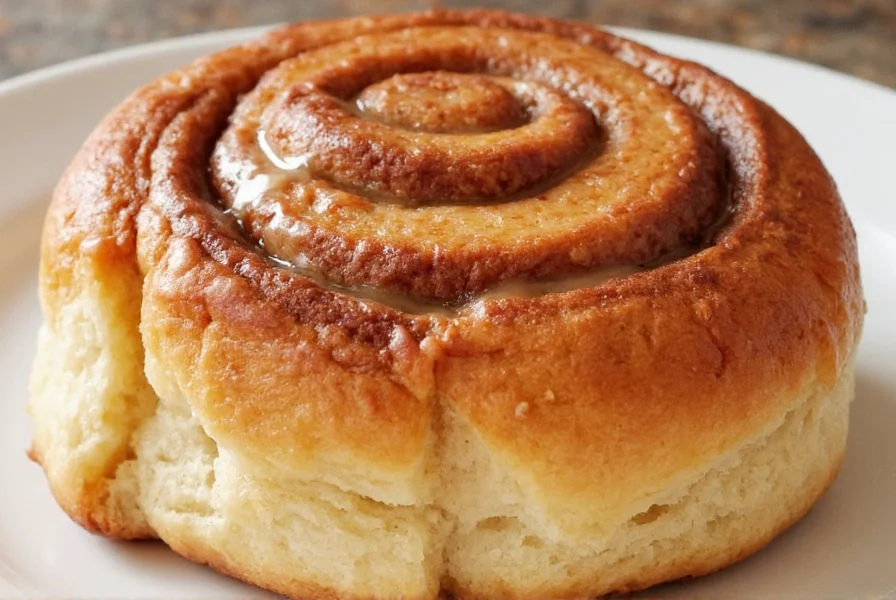The magic of perfectly ooey gooey cinnamon rolls in café settings lies at the intersection of precise baking science and immediate consumption. When crafted correctly, these pastries deliver a textural experience where the outer layers maintain slight resistance while the center yields to reveal molten cinnamon-sugar filling. This phenomenon isn't accidental—it's the result of carefully calibrated ingredient ratios and baking techniques perfected in specialty coffee shop environments.
The Science Behind the Perfect Texture
Professional bakers achieve the coveted café-style ooey gooey cinnamon roll texture through three critical factors:
- Temperature control: Baking at exactly 350°F (175°C) ensures even cooking without drying the exterior before the filling melts
- Ingredient precision: Using European-style butter (82% fat content) creates superior lamination and melt-in-mouth quality
- Immediate service: Serving within 8-12 minutes of oven removal preserves the ideal viscosity of the filling
When these elements align, the sugar-butter-cinnamon mixture reaches its eutectic point—liquefying sufficiently to create that signature pull while maintaining enough structure to prevent complete collapse. This delicate balance separates authentic artisanal cinnamon roll bakery techniques from mass-produced alternatives that often sacrifice texture for shelf stability.
| Texture Characteristic | Authentic Café Roll | Commercial Roll |
|---|---|---|
| Center Consistency | Warm, flowing filling | Set, crystallized filling |
| Dough Structure | Layered, slightly elastic | Uniform, dense |
| Icing Behavior | Melts into warm filling | Sets firmly on cool surface |
| Optimal Consumption Window | 8-15 minutes post-bake | Up to 24 hours |
Historical Connection to Café Culture
The association between ooey gooey cinnamon rolls and café experiences dates to early 20th century European coffee houses, where fresh-baked pastries were served alongside coffee. Scandinavian immigrants later popularized the concept in North America through "kringle" shops that emphasized immediate consumption of baked goods. Modern specialty coffee movements revived this tradition, recognizing that certain pastries—particularly cinnamon rolls—achieve peak sensory experience only when served hot from the oven.
Today's best ooey gooey cinnamon rolls recipe standards in cafés require specific operational protocols:
- Baking in small batches throughout service hours
- Maintaining strict 10-minute maximum hold time before serving
- Using traditional cream cheese icing that melts into the warm roll
- Offering "fresh from oven" notifications to customers

Identifying Quality Café Cinnamon Rolls
When seeking authentic café style cinnamon roll texture, look for these indicators:
- Visible steam rising from the plate when served
- Separation between layers when gently pulled apart
- Golden-brown exterior with no darkened edges
- Immediate icing absorption rather than pooling on top
Cafés committed to quality often display baking schedules or offer "just pulled" notifications. The most authentic establishments won't serve rolls that have cooled beyond the ideal temperature window, sometimes requiring customers to wait for the next batch. This dedication to the why are my cinnamon rolls not gooey problem demonstrates professional understanding of pastry science.
Common Texture Failures and Solutions
Many home bakers struggle to replicate the authentic cinnamon roll bakery techniques found in specialty cafés. The most frequent issues include:
- Overbaking: Causes filling to crystallize rather than melt (solution: reduce baking time by 3-5 minutes)
- Cold ingredients: Prevents proper lamination (solution: use room temperature butter and milk)
- Excessive flour: Creates dense texture (solution: measure by weight, not volume)
- Premature icing: Causes sogginess (solution: wait exactly 8 minutes post-oven)

Global Café Interpretations
While American-style ooey gooey cinnamon rolls and café pairings dominate popular perception, regional variations exist:
- Scandinavian cafes: Use cardamom-infused dough with pearl sugar topping
- German bakeries: Incorporate rum-soaked raisins in the filling
- Japanese kissaten: Serve smaller portions with matcha-infused icing
- Mexican cafés: Add cinnamon sticks directly to coffee served alongside rolls
These variations maintain the core principle of immediate consumption while adapting to local flavor preferences. The universal marker of quality remains that signature ooey-gooey center achieved through precise baking science rather than added syrups or artificial texturizers.
Conclusion: The Essence of Quality
True ooey gooey cinnamon rolls in café settings represent more than just a pastry—they embody a commitment to freshness, precision, and sensory experience. The perfect specimen balances structural integrity with molten filling, creating a textural journey from the first visual steam to the final sticky-fingered bite. When evaluating cafés, prioritize establishments that treat cinnamon rolls as a time-sensitive craft rather than a commodity item. This approach ensures you experience the authentic, science-backed perfection that defines this beloved bakery classic.
Frequently Asked Questions
What temperature should ooey gooey cinnamon rolls be served at?
Ooey gooey cinnamon rolls achieve optimal texture when served between 140-160°F (60-71°C). This temperature range keeps the sugar filling in a semi-liquid state while maintaining the dough's structure. Professional cafés use infrared thermometers to verify rolls reach this precise window 8-12 minutes after baking.
Why don't my homemade cinnamon rolls have the gooey texture of café versions?
Home bakers often miss the café-quality texture due to three common errors: overbaking by 3-5 minutes, using American butter (lower fat content than European-style), and applying icing too early or too late. For authentic results, bake until internal temperature reaches 190°F (88°C), use 82% fat butter, and ice exactly 8 minutes after oven removal when surface temperature hits 150°F (66°C).
How do professional cafés keep cinnamon rolls gooey throughout service?
Specialty cafés maintain ooey gooey texture through batch baking every 20-30 minutes during peak hours, never holding finished rolls beyond 15 minutes. They use proofing ovens set to 95°F (35°C) to maintain dough temperature before baking, and many implement "fresh batch" notification systems. The key is accepting limited production runs rather than attempting to keep rolls warm for extended periods, which destroys the delicate texture balance.
What's the difference between 'gooey' and 'underbaked' cinnamon rolls?
Properly gooey rolls have fully cooked dough structure with melted filling, while underbaked rolls feature raw dough and separated ingredients. The critical distinction: gooey rolls maintain defined layers that pull apart cleanly with melted filling between them, whereas underbaked rolls have collapsed structure with liquid pooling beneath uncooked dough. Authentic café-style rolls reach 190°F (88°C) internally while maintaining the signature texture.










 浙公网安备
33010002000092号
浙公网安备
33010002000092号 浙B2-20120091-4
浙B2-20120091-4